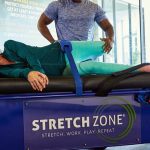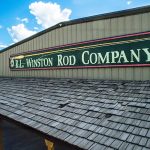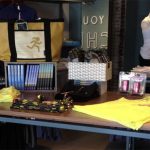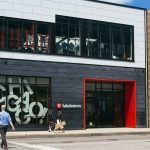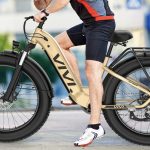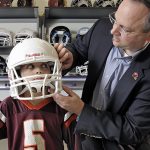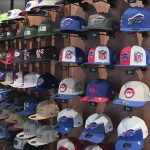A long winter in Europe boosted sales by Amer Sports Corp.s Winter and Outdoor segment in the first quarter ended March 31, countering declines in its U.S. dominated Ball Sport and Fitness segments.
Amer reported that sales at its Winter and Outdoor segment rose 10.5% thanks to good weather and excellent products, while sales at its Ball Sports (Wilson) and Fitness (Precor) segments fell 11.6% and 5.2%, respectively. Geographically, sales stabilized in the Americas, which accounts for 64% of the companys Ball Sports sales, while growing 8% in the EMEA (Europe, Middle East and Asia) region, which accounts for 71% of the companys Winter and Outdoor segment sales. Sales rose 16% in Asia, where Winter and Outdoor sales growth continue with the exception of Japan. Executives called out Korea as an increasingly strong market for winter sports equipment, baseball and Solomon footwear. Amers outdoor brands include Salomon, Suunto, Atomic, Arc Teryx and Mavic.
The strong performance of Winter and Outdoor pushed net sales at the company to €372.6 million ($516.3 mm) in the quarter, up 5% from the same quarter a year ago. Higher sales and higher gross margins helped push EBIT to €9.5 million ($13.2 mm), representing a €16.4 million ($22.7 mm) swing from a loss of €6.9 million (-$9.6 mm) in the same period a year earlier. The company was able to increase its gross profit margin 220 basis points with improvement coming from all businesses and most pronounced in the Winter Sports Equipment business. The improved margins came from extracting lower prices from vendors, firmer pricing and lower inventory, which fell nearly 29% from a year earlier.
Winter and outdoor retailers appear to have ended the winter season with lower inventories than the same time last year, said Pekka Paalanne, EVP, CFO and acting president and CEO. He added that retail prices remained pretty stable during the season, perhaps reflecting a more disciplined approach by manufacturers in the wake of massive losses of recent years. Paalanne speculated vendors would offer more modest discounts to big retailers in the coming season.
The results prompted Amer to upgrade its outlook. The company now expects its EBIT margin to improve to the mid-single digits this year. Still, the company said it was unlikely it would repeat last year’s margin improvements. Executives said they expect the sporting goods market to recover moderately with the pace of the recovery varying significantly from region to region and sport to sport.
The company will continue to focus on improving profitability through improved gross profit and tight cost control, including strict control over working capital. It ended the quarter with 2,211 employees in the Americas, down 4% from a year earlier. Globally, employment rose 2%, including a 7% decline in the Ball Sports segment and a 6% increase in the Winter and Outdoor segment. “We executed well our key priorities in the first quarter,” said Paalanne. “Gross profit percentage was up by more than two points and profitability increased in all segments. At the same time, operating expenses were kept under tight control and we made further gains in managing the working capital.”
In the Winter & Outdoor Segment, equipment sales were particularly strong, rising 13% in local currencies. While sales in all product categories were up, cross-country skiing grew fastest especially in central and northern Europe. Strong in-season orders in Solomon footwear drove up footwear sales by 7% – a pace the company expects will continue in coming quarters. That growth came from Europe, Canada and the Asia Pacific, while sales lagged in the United States.
Sports Instruments and Cycling sales improved in the upper-single digits over last years weak first quarter. Bike dealers were still cautious and postponed deliveries of the companys Mavic wheels and other parts because of the long winter. The negative trend in OEM sales continued. Growth in instrument sales was driven primarily by the outdoor sector.
In the Ball Sports segment, Team Sports grew fastest thanks largely to trade distribution gains in the United States and strong baseball sales in the United States, Japan and Korea. A new line of premium BLX tennis rackets launched during the first quarter were well received, but shipments were limited by capacity constraints. The company said it expects to catch up on back orders for the line by the end of May with no leakage to competitors. Segment sales grew 6% in the Americas.
Racquet sports sales rose 6% in the Americas and 5% in EMEA, but declined 16% in Asia due largely to weaker demand in Japan. Golf sales rose 30% in the United States, but declined 7% in EMEA due to the long winter in what is usually a period of reduced demand.
Difficult market conditions continued in the Precor business, due in large part to tight credit conditions, which have made it difficult for fitness clubs to open new facilities or replace equipment. Amer said most clubs and institutions are still holding off their expansion plans in 2010. Many have chosen to reduce their costs by extending the service life of their existing equipment. The only sign of improvement is that clubs are generating more revenues from personal coaching and other ancillary services, which indicates their members have resumed spending. That could lead to new business by the fourth quarter, when clubs traditionally place their orders in advance of the New Year fitness push.

